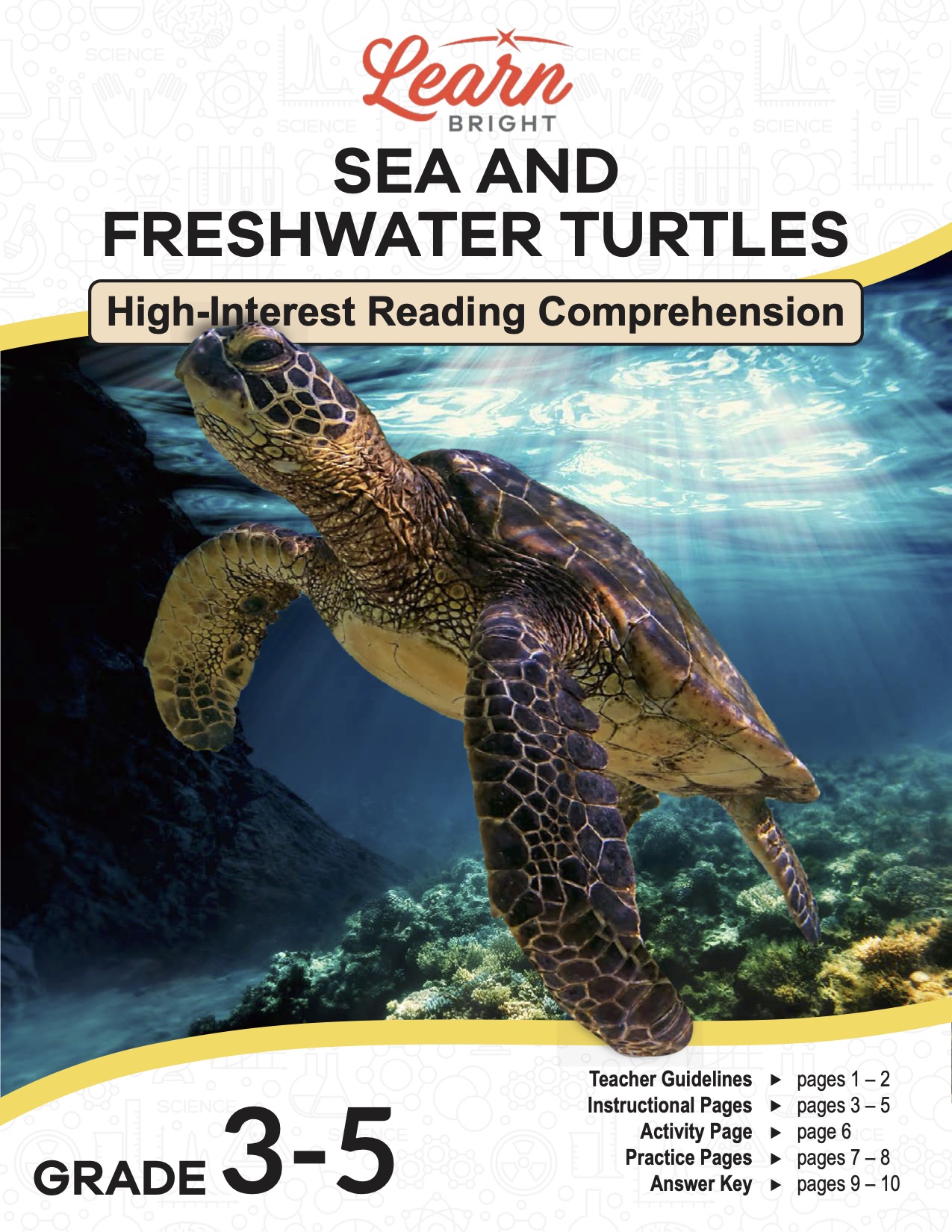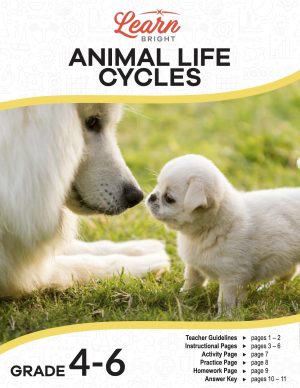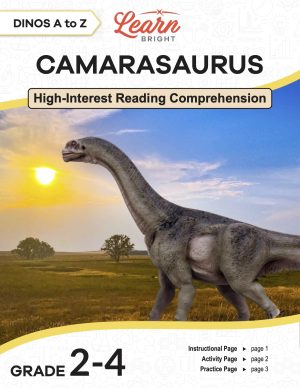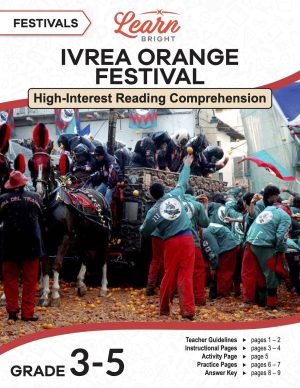Description
What our Sea and Freshwater Turtles lesson plan includes
Lesson Objectives and Overview: Sea and Freshwater Turtles is a high-interest reading comprehension lesson plan. As such, students will practice various close reading and comprehension skills. In addition, they will learn about the habitat, diet, and behaviors of these two types of turtles. This lesson is for students in 3rd grade, 4th grade, and 5th grade.
Classroom Procedure
Every lesson plan provides you with a classroom procedure page that outlines a step-by-step guide to follow. You do not have to follow the guide exactly. The guide helps you organize the lesson and details when to hand out worksheets. It also lists information in the yellow box that you might find useful. You will find the lesson objectives, state standards, and number of class sessions the lesson should take to complete in this area. In addition, it describes the supplies you will need as well as what and how you need to prepare beforehand. All you need for this lesson are extra paper, markers, pencils, and colored pencils.
Teacher Notes
The paragraph on this page provides a little more information or guidance on what to expect from the lesson. It explains that you can teach this lesson in a whole-class setting or as an independent, small-group activity. You can use the blank lines to record any thoughts or ideas you have as you prepare.
SEA AND FRESHWATER TURTLES LESSON PLAN CONTENT PAGES
What Are Freshwater and Sea Turtles?
The Sea and Freshwater Turtles lesson plan contains three content pages. It begins by providing a box of background information about these cool reptiles. Turtles live in wetlands, lakes, oceans, and rivers. They are omnivores and enjoy a variety of foods. They typically live between 40 and 50 years.
Turtles are reptiles that can live in both fresh water and salt water. The main difference between the two is simply where they prefer to hang out. As the name suggests, freshwater turtles love to live in rivers, lakes, and ponds. They have strong legs with webbed feet that make them excellent swimmers. On the other hand, sea turtles prefer to live in the big blue ocean. They have unique flippers instead of legs, which help them gracefully glide through the water.
Some turtles prefer to be solitary wanderers while other like to be part of a group called a bale. Freshwater turtles, for instance, often go about their business on their own, exploring their watery homes. Sea turtles, however, are known to be more social and sometimes hang out in groups, especially during feeding or nesting times. Perhaps like you, they like swimming and playing with their friends. The groups help them navigate and find food, showcasing their teamwork skills in the underwater world.
When it comes to caring for their little ones, freshwater and sea turtles are pretty similar. They both lay eggs in nests during a process called oviparous reproduction. Mama turtles carefully choose a good spot on land to bury their eggs. Then, they leave them to hatch on their own. Once the baby turtles hatch, they start their journey to the water. It’s like a turtle family tradition—laying eggs on land and letting the little ones walk into the sea after they hatch to begin their adventure.
What Do They Eat?
Turtles have interesting tastes in food. What they eat depends on whether they live in fresh water or salt water. Freshwater turtles are little chefs that create a menu filled with aquatic plants, insects, small fish, and even worms. They are omnivores and use their sharp beaks to munch on plants and small animals. Freshwater turtles are patient predators.
Some use a sit-and-wait strategy, patiently waiting for their prey to come close, and then they strike with their quick and strong jaws. Others, like the snapping turtle, are more active hunters, using their sharp senses to locate food and rapidly grab it.
Sea turtles have a slightly different taste in their underwater menu. These ocean wanderers are mostly herbivores and primarily dine on sea grasses and algae. Their strong beaks help them nip at the plants, making them efficient grazers in marine habitats. Sea turtles are also known to eat jellyfish and small invertebrates occasionally, adding a bit of variety to their diet.
Other Interesting Facts
One interesting fact about freshwater and sea turtles is the ability of some species to aestivate during harsh environmental conditions. Freshwater turtles, especially those in arid regions, can enter a state of dormancy known as aestivation, where they burrow into mud or seek refuge in cool, moist areas to conserve energy and survive periods of extreme heat or drought.
Another interesting fact about turtles, particularly sea turtles, is their incredible navigation skills during long-distance migrations. Some sea turtle species, like the loggerhead turtle, undertake impressive journeys across vast oceanic expanses to reach nesting or feeding grounds. Scientists believe that sea turtles use the earth’s magnetic field as a navigational guide, allowing them to traverse thousands of miles with remarkable precision.
Both freshwater and sea turtles have fascinating shell structures. The shell, composed of bone and cartilage, protects the turtle’s internal organs. Interestingly, the bony part of the shell is covered by plates called scutes. The growth rings on these scutes are like tree rings. Scientists can use them to estimate a turtle’s age, providing valuable insights into their life history. This unique feature makes the turtle’s shell a living record of its journey through time.
Why Turtles Are Important to the Environment
Freshwater and sea turtles are essential contributors to the environment because they play a vital role in maintaining the balance of their ecosystems. Freshwater turtles, for example, help control the populations of insects, small fish, and even plants by munching on them. Additionally, the nests where they lay eggs provide nutrients to the soil when the eggs hatch, benefiting the surrounding environment.
While these turtles are crucial for their ecosystems, some species face challenges that make them endangered. Pollution, habitat destruction, and humans’ over-harvesting of their eggs and shells threaten their populations. Sometimes, sea turtles get caught in fishing nets and get injured. As a result, conservation efforts are in place to protect and preserve these remarkable reptiles.
We must understand and appreciate turtles’ role in the environment and work together to ensure their habitats are safe and thriving. By doing so, we can help these ancient and fascinating creatures continue their essential roles in the natural world.
SEA AND FRESHWATER TURTLES LESSON PLAN WORKSHEETS
The Sea and Freshwater Turtles lesson plan includes two worksheets: an activity worksheet and a practice worksheet. Each one will help students solidify their grasp of the material they learned throughout the lesson. You can refer to the classroom procedure guidelines to know when to hand out each worksheet.
CELEBRATE SEA TURTLES ACTIVITY WORKSHEET
A turtle conservation group has hired the students to create something to help turtles better survive so they will not go extinct. Students will work in teams to design and build (or draw) their invention. They will follow the steps listed on the worksheet page to complete the project.
SEA AND FRESHWATER TURTLES PRACTICE WORKSHEET
The practice worksheet requires students to answer a series of 11 questions. These questions all relate to the content pages, so students will need to refer to them often for the answers. In addition, each question provides which reading tool the question corresponds to, such as text feature, vocabulary, or comprehension.
Worksheet Answer Keys
At the end of the lesson plan document is an answer key for the practice worksheet. The correct answers are all in red to make it easier for you to compare them with students’ responses. If you choose to administer the lesson pages to your students via PDF, you will need to save a new file that omits these pages. Otherwise, you can simply print out the applicable pages and keep these as reference for yourself when grading assignments.





